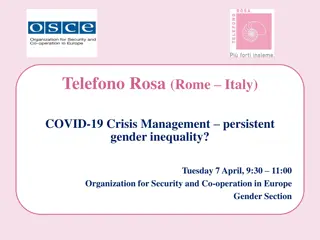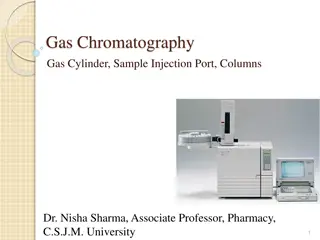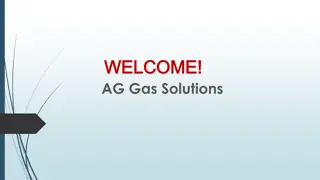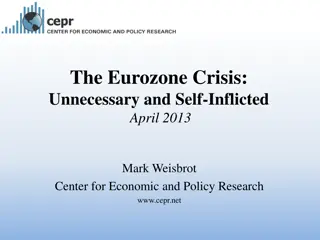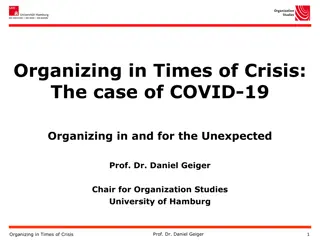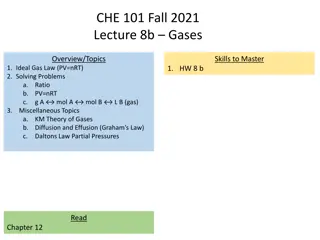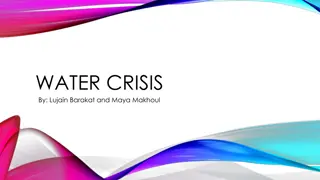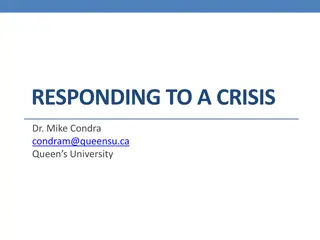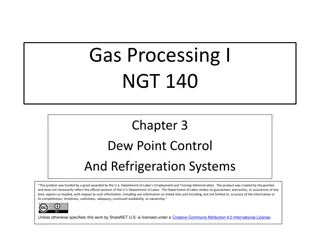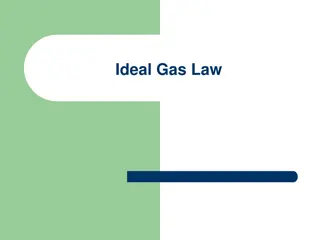Addressing the Gas Crisis in Rome: Solutions and Strategies
The gas crisis at Centro Fermi in Rome on 4th July 2019 highlighted the need for reducing harmful gas emissions. Regulations have been in place since the 1990s to ban gases with high ozone depletion power. The European Community is progressively banning gases with high global warming power, leading to supply issues and high prices. Efforts are underway to find suitable gas mixtures like HFO-R1234ze to replace current gases. Strategies include sourcing suppliers for lower-priced R134a gas while exploring challenges with importing. Listen to experts' talks for insights on tackling the crisis effectively.
Download Presentation

Please find below an Image/Link to download the presentation.
The content on the website is provided AS IS for your information and personal use only. It may not be sold, licensed, or shared on other websites without obtaining consent from the author. Download presentation by click this link. If you encounter any issues during the download, it is possible that the publisher has removed the file from their server.
E N D
Presentation Transcript
The gas crisis Centro Fermi, Rome, 4 July 2019
Prodroms to the problem European Community since long time issued regulations to reduce the emission of gas potentially harmful to the environment In 1990s gases with a high Ozone Deplation Power were banned CF3Br and CF4, used at the time for RPCs, were phased down and C2H2F4 (R134a) was introduced Since a dozen of years EC is planning to progressively ban gases with a Global Worming Power (GWP) > 150 (where GWP(CO2)=1) Scientific applications are extempted from this prohibition The problem will progressively come from supply problems and high prices CERN started in 2013 an R&D program to replace C2H2F4 (GWP=1240) and SF4 (GWP=13400) in the detectors of the experiments at LHC, where o(2000 l/h) are leaked out
The EEE gas problem Price of one 40 kg bottle of R134a has increased from 260 to around 1100 i.e. from 6.5 /kg to around 27.5 /kg (Price of SF6 has stayed constant) C2H2FGas consumption in EEE: in 2018 used about 83 bottles in around 40 stations taking data 1 bottle = 40 kg of gas, whose density is 4.25 kg/m3 1 bottle = 9411 litres (at atmospheric pressure) Maximum flux allowed in EEE 2 l/h one bottle is enough for 4705 hours = 196 days = 6.53 months (in 2018 also 9 bottles of SF6 used)
The EEE gas problem At the moment we do not have a suitable gas mixture for replacement Tests started in 2017, then stopped, now resumed Possible suitable gas mixtures based on tetrafluoropropane (it exists in three allotropic forms, we need HFO-R1234ze) Cost of R1234ze is still higher than R134a (about 30 /kg), density is unknown Mixtures are tipically made of R1234ze/C02 (or He) 50/50 At the moment we do not have a recirculation system The ones in use at LHC experiments cost 30-40 k and need maintenance (filter replacement) We need about 60 of such systems
What we are doing to provide a solution Find suppliers who would sell us R134a at a lower price (a.k.a. which is the real price of R134a?) R134a is sold at CERN by Pangas at 7.5 CHF/kg One 40 kg bottle of R134a is sold at 547 CHF on EDH (=12 /kg) Spanish supplier would provide 40 kg bottles at around 750 each (17.5 /kg) SIAD would supply R134a to EEE at 17.5 /kg Listen to talks by Daniele and Fabrizio!!! Chinese suppliers sell R134a at 1-2 /kg but importing almost impossible Problems connected with importing R134a from CERN in Italy to be investigated (Custom duties) + EC quotas + transportation
Reduce gas consumption Bottle consumption per station: March 17 March 19 (data taking time: 18 months) Not so good boys Bad boys! Let us reduce the maximum allowed flux to 1 l/h Tests ongoing (talk by Marco and Stefano) Spot and eliminate any gas leackage imperative A thorough campaign has to be carried on before Run-6
A recirculation system for EEE Contacted Roberto Guida and Barbara Mandelli from CERN They have designed and built the recirculation systems for LHC experiments First meeting 3 of June We have a possible solution in mind, we will let you know for the end of this week none got Many more emails sent On 25 June: We are investigating the possibility to use Raspberry PI to control this system, we need some weeks EEE has a lot of experience on Raspberry PI Asked for an approximate cost of the system 2.5 k + (maybe) 1.5 k for humidity sensors
New gas mixtures Fine tuning of the mixtures based on HFO Resume tests on them How much do they cost? Use other gas mixtures In particular simpler gases RPCs were in origin used in streamer with Ar, CO2, (Ne), By pass the amplification electronics? Two test laboratories: CERN and Cosenza An important program of tests has to be carried out Talk by Ivan





